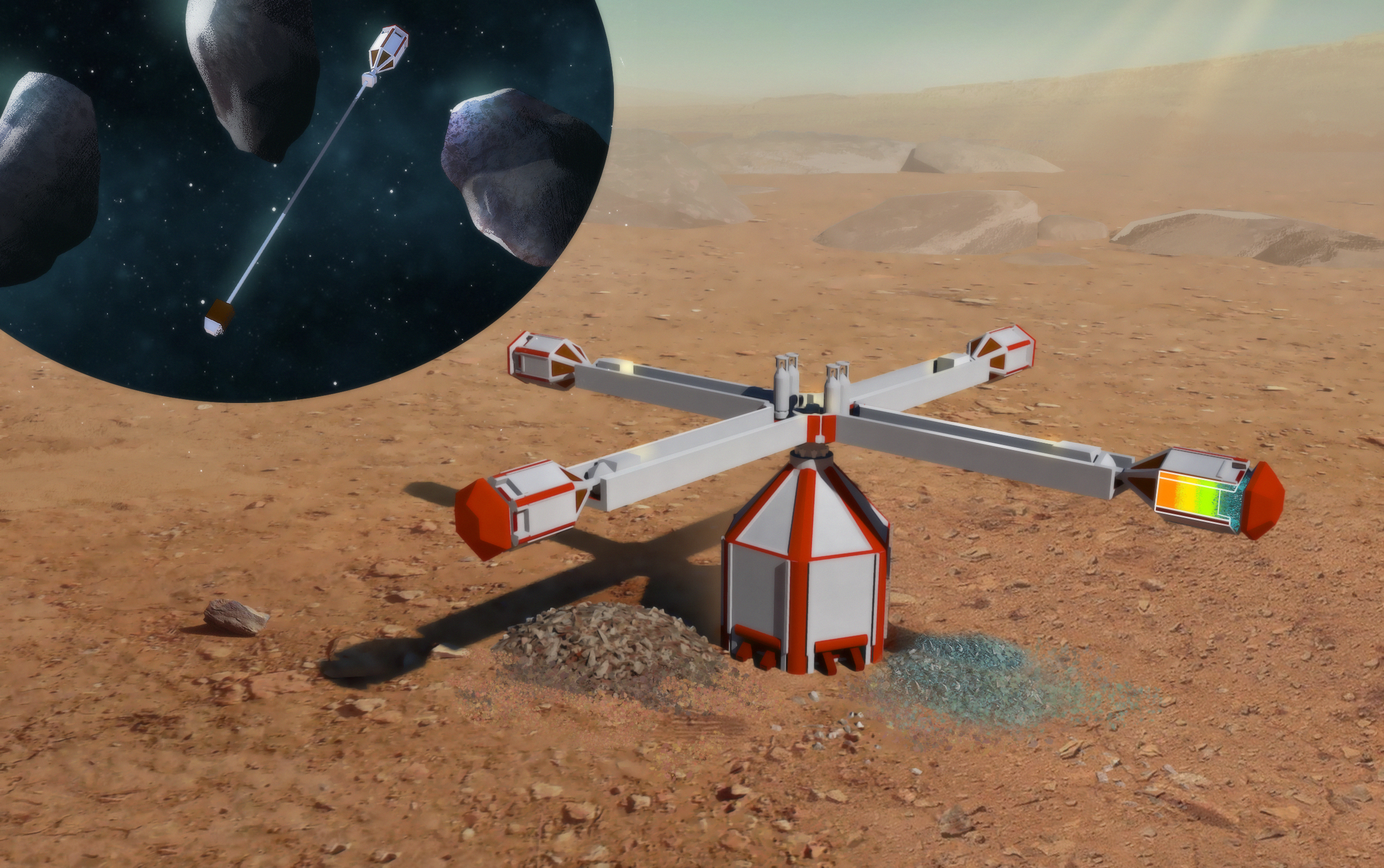
How can space settlers harness useful resources that have not been concentrated into ore bodies like what takes place via geologic process on Earth over eons of time? Could we artificially speed up the process using synthetic geology? Kevin Cannon, a planetary geologist at the Colorado School of Mines (CSM), thinks it might be possible to unlock the periodic table in space to access a treasure trove of materials with an invention he calls the Pinwheel Magma Reactor. He has submitted a NASA Innovative Advanced Concepts proposal for the concept. The device is a essentially a centrifuge sitting on a planetary surface with a solar furnace reaction chamber spun at the end of its axis. In space, a free flying system could be connected by tether.

In a Twitter thread Cannon sets the table with a basic geology lesson explaining why mining on Earth is so different from what we will need in space. The Earth’s dynamic crustal processes, driven by fluid flow and plate tectonics over millions of years, exhibit a very different geology then that under which the Moon, Mars and asteroids evolved. The critical minerals that could be useful to support life and a thriving economy in space settlements are present in far lower concentrations in space then on Earth.
Current plans for ISRU infrastructure on the Moon and asteroids are only targeting a small set of elements like hydrogen, oxygen, carbon, silicon and iron (below, left).

But an advanced society expanding out into the solar system would benefit from many critical minerals (above, right) that are not easily accessible because of their far lower concentrations. For example, energy production will need uranium and thorium, energy storage systems require lithium and electronics manufacturing is dependent on rare earths. So how to unlock the periodic table for these critical materials?
If we are to live off the land by harvesting useful materials to build and sustain space settlements we’ll need a totally revolutionary mining process. The PMR was designed with this in mind. The procedure begins by loading unprepared rocks or regolith into the chamber followed by heating via a solar furnace. Next, the chamber is spun up in the centrifuge where super gravity concentrates the desired minerals. Cannon believes that the PMR could also be used to extract water from regolith on the moon or asteroids.
“If hydrated asteroid material or icy regolith are put in at low temperatures, they’ll be separated by super-gravity and can be siphoned off.”
Of course the technology needs to be validated and flight hardware developed to determine if the PMR can be a tool to speed up the geological processes to concentrate useful materials for humans, who can then use them to synthetically propagate life in space. Cannon sums it up:
“Obviously a lot of work to be done to prove out the concept. But I think that a process flow of synthetic geology -> synthetic biology is the way to solve the concentration problem in space and enrich any element we want from the periodic table.”
Check out Cannon’s research page at The Cannon Group . He also blogs on space resources and development at Planetary Intelligence.
